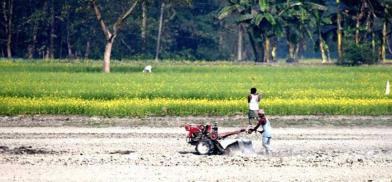India's agricultural exports could rise to $70 billion in the next few years, said a High-Level Expert Group (HLEG) report on agricultural exports set up by the Fifteenth Finance Commission to recommend measurable performance incentives for states to encourage agricultural exports and to promote crops to enable high import substitution.
The group said in its report to the Commission that India's agricultural export has the potential to grow from USD 40 billion to USD 70 billion in a few years.
The estimated investment in agricultural export could be in the tune to USD 8-10 billion across inputs, infrastructure, processing and demand enablers, said HLEG.
According to the group, additional exports may create an estimated 7-10 million jobs and it will lead to higher farm productivity and farmer income.
After intensive research and consultations and taking inputs from stakeholders and the private sector through intensive consultations, the HLEG has recommended to focus on 22 crop value chains with demand driven approach. It has also suggested to solve Value Chain Clusters (VCC) holistically with focus on value addition and create state-led export plan with participation from stakeholders.
The group is of the opinion that private sector should play an anchor role and the Centre should be an enabler. It has also recommended for a robust institutional mechanism to fund and support implementation.
The group in its report has recommended a State-led Export Plan, a business plan for a crop value chain cluster that will lay out the opportunity, initiatives and investment required to meet the desired value chain export aspiration. These plans will be action-oriented, time-bound and outcome-focused.
Suggesting few factors for the success of the State-led Export Plan, the Group has said that plans should be collaboratively prepared with private sector players and commodity boards. It also stressed the need of leveraging of state plan guide and value chain deep dives and said private sector should play an anchor role in driving outcomes and execution.
As per the suggestions of the group, the Centre should enable state-led plans and institutional governance should be promoted across states and Centre.
It has also emphasized on funding through the convergence of existing schemes, Finance Commission allocation and private sector investment.
The Group was of the view that the private sector players had a pivotal role to play in ensuring demand orientation and focus on value addition; ensuring project plans are feasible, robust, implementable and appropriately funded; providing funds for technology based on business case and for creating urgency and discipline for project implementation.
The members of the HLEG include Sanjiv Puri, Chairman and Managing Director, ITC Chairman, Radha Singh, Former Agriculture Secretary; Manoj Joshi, Representative of Ministry of Food Processing Industries; Diwakar Nath Misra, Chairman and Paban Kumar Borthakur, Former Chairman, APEDA; Suresh Narayanan, CMD, Nestle India, Jai Shroff, CEO, UPL Limited, Sanjay Sacheti, Country Head India, Olam Agro India Ltd; Sachin Chaturvedi, Director General, Research and Information System for Developing Countries (RIS).
The Commission appreciated the efforts of the Group and it will now look into all the recommendations for finalising its own report to the government of India, said an official statement. (IANS)
Source: https://southasiamonitor.org/



